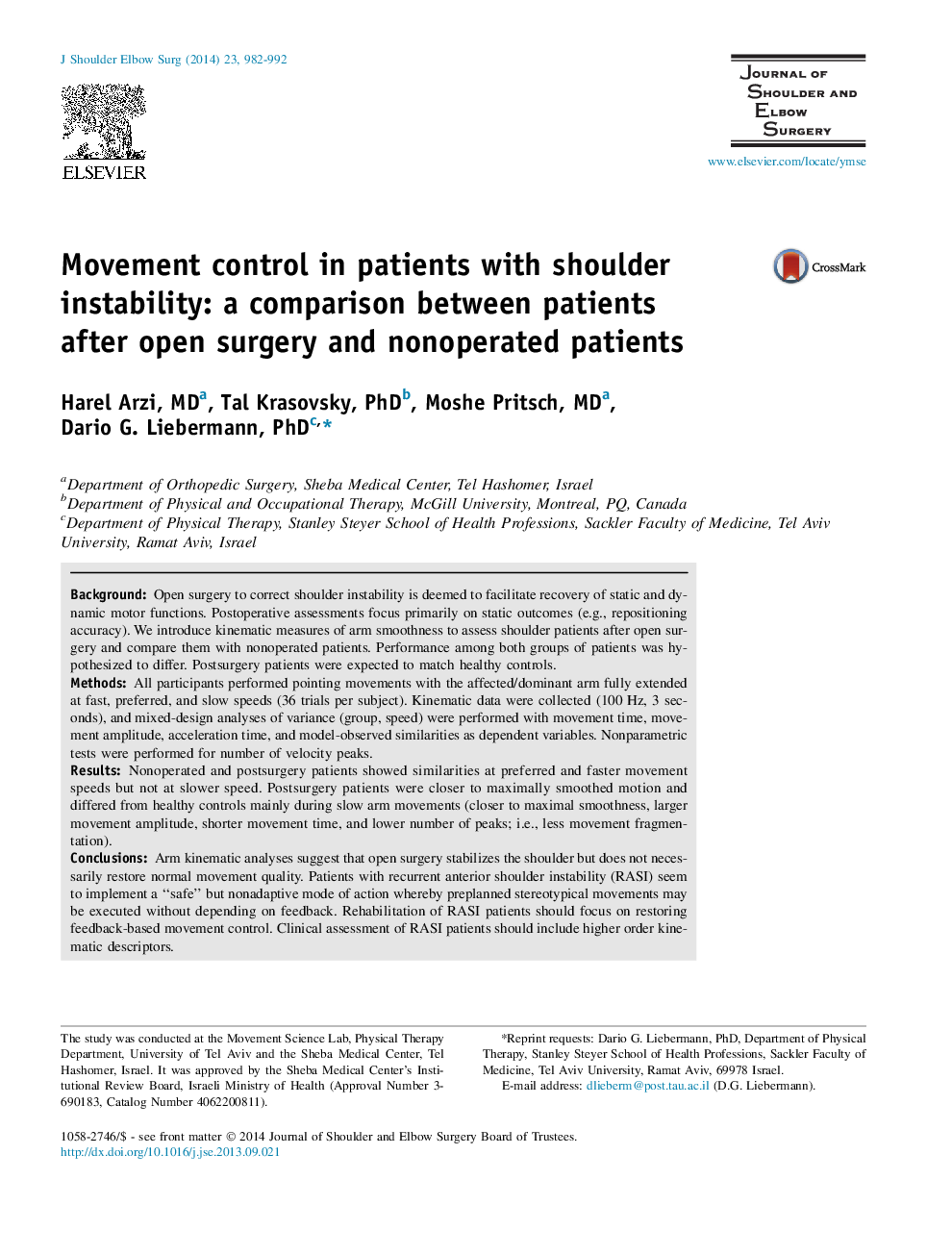| کد مقاله | کد نشریه | سال انتشار | مقاله انگلیسی | نسخه تمام متن |
|---|---|---|---|---|
| 4074240 | 1267003 | 2014 | 11 صفحه PDF | دانلود رایگان |
BackgroundOpen surgery to correct shoulder instability is deemed to facilitate recovery of static and dynamic motor functions. Postoperative assessments focus primarily on static outcomes (e.g., repositioning accuracy). We introduce kinematic measures of arm smoothness to assess shoulder patients after open surgery and compare them with nonoperated patients. Performance among both groups of patients was hypothesized to differ. Postsurgery patients were expected to match healthy controls.MethodsAll participants performed pointing movements with the affected/dominant arm fully extended at fast, preferred, and slow speeds (36 trials per subject). Kinematic data were collected (100 Hz, 3 seconds), and mixed-design analyses of variance (group, speed) were performed with movement time, movement amplitude, acceleration time, and model-observed similarities as dependent variables. Nonparametric tests were performed for number of velocity peaks.ResultsNonoperated and postsurgery patients showed similarities at preferred and faster movement speeds but not at slower speed. Postsurgery patients were closer to maximally smoothed motion and differed from healthy controls mainly during slow arm movements (closer to maximal smoothness, larger movement amplitude, shorter movement time, and lower number of peaks; i.e., less movement fragmentation).ConclusionsArm kinematic analyses suggest that open surgery stabilizes the shoulder but does not necessarily restore normal movement quality. Patients with recurrent anterior shoulder instability (RASI) seem to implement a “safe” but nonadaptive mode of action whereby preplanned stereotypical movements may be executed without depending on feedback. Rehabilitation of RASI patients should focus on restoring feedback-based movement control. Clinical assessment of RASI patients should include higher order kinematic descriptors.
Journal: Journal of Shoulder and Elbow Surgery - Volume 23, Issue 7, July 2014, Pages 982–992
